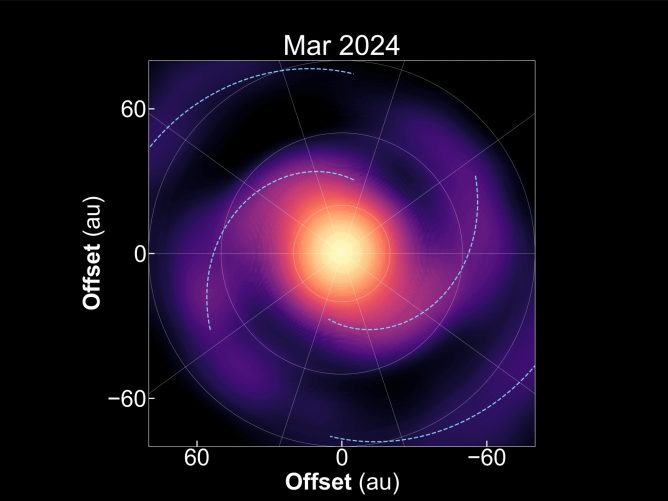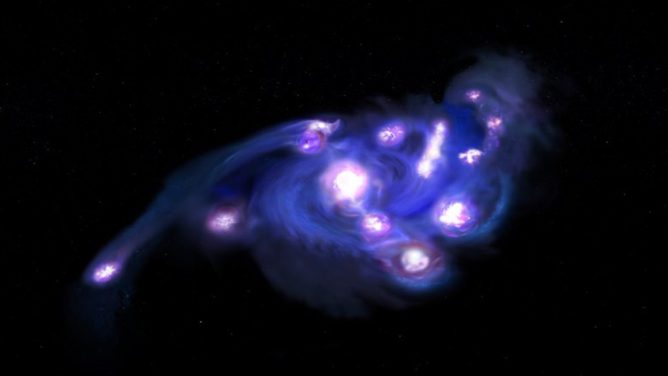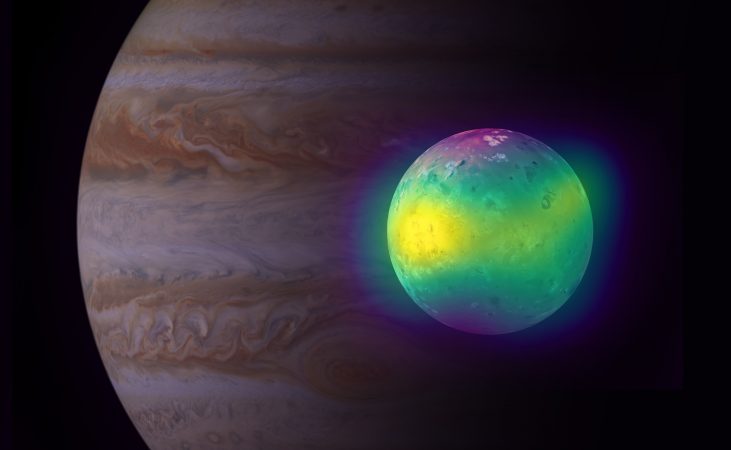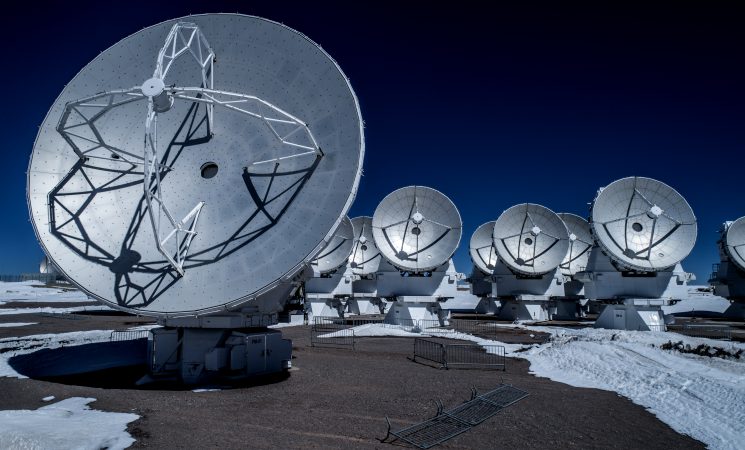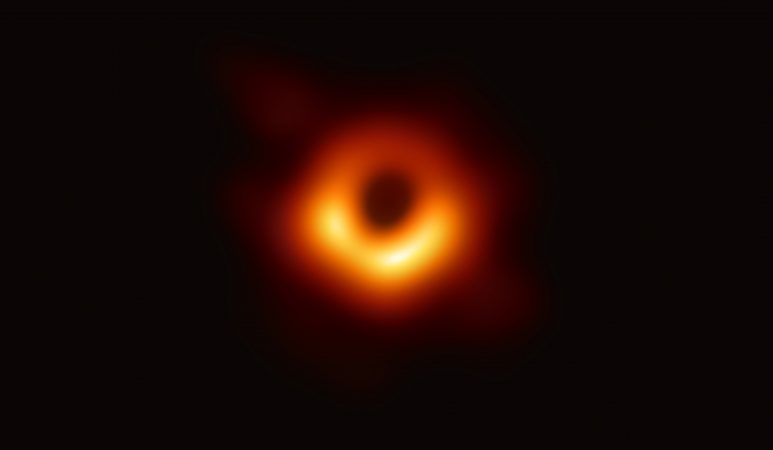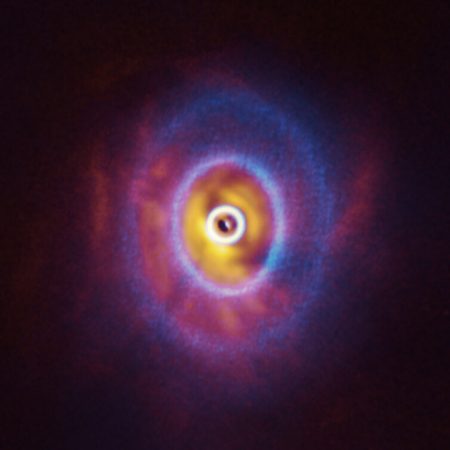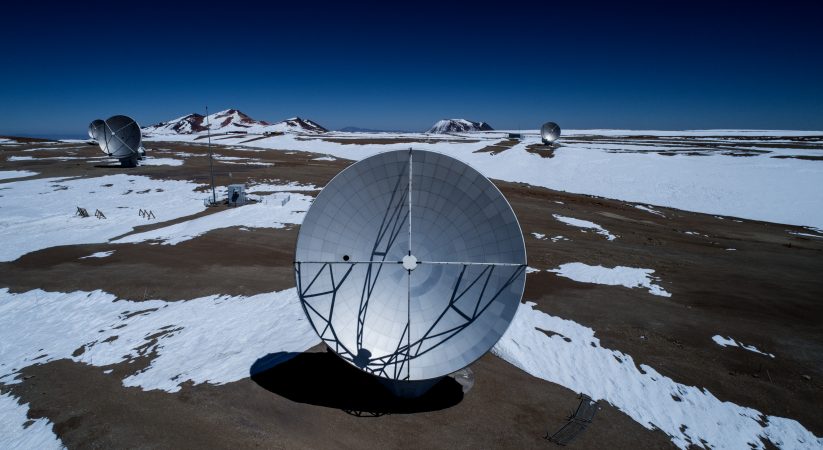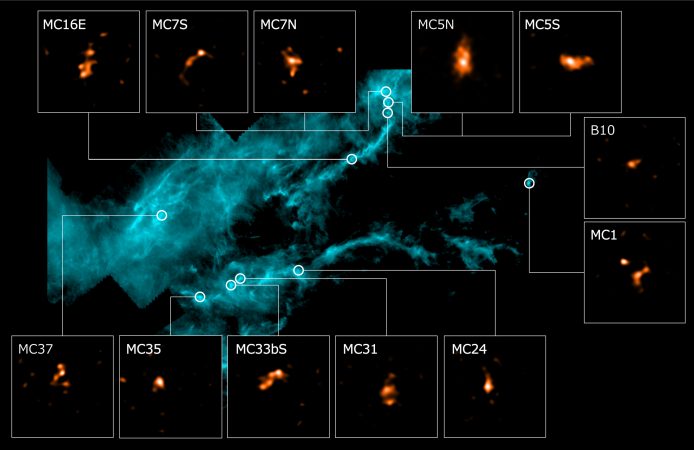2025.11.18
Astronomers discover a superheated star factory in the early universe ~Hot dust indicates the rapid growth of the early galaxy~
Astronomers have uncovered a previously unknown, extreme kind of star factory by taking the temperature of a distant galaxy using the ALMA telescope. The galaxy is glowing intensely in superheated cosmic dust while forming stars 180 times faster than our own Milky Way. The discovery indicates how galaxies could have grown quickly when the universe was very young, solving a long-standing puzzle for astronomers.
The first generations of stars formed under conditions very different from anywhere we can see in the nearby universe today. Astronomers are studying these differences using powerful telescopes that can detect galaxies so far away their light has taken billions of years to reach us.
An international team of astronomers led by Tom Bakx at Chalmers University of Technology (former ALMA Grant Postdoctoral Researcher at Nagoya University) has measured the temperature of the cosmic dust *1 in a galaxy MACS0416_Y1 (hereafter simply Y1) in the constellation Eridanus. The galaxy, at redshift *2 z=8.3, dates back to the very early Universe about 13.2 billion years ago. Previous observations by the same team detected a radio signal from abundant dust in Y1, making it a record-holding early galaxy hosting cosmic dust. (Related Release: The Rise and Fall of Ziggy Star Formation and the Rich Dust from Ancient Stars, March 20, 2019)
The fact that abundant cosmic dust had already accumulated in such a young galaxy—less than a billion years after the Big Bang—led astronomers to suspect that Y1 might be running a different, superheated kind of star factory. When stars are forged in huge, dense clouds of gas, the youngest and most massive stars light up gas and dust as nebulae. Tiny grains of cosmic dust heated by starlight shine at wavelengths longer than the human eye can see, especially brightly in the infrared. These galaxies are called “ultra-luminous infrared galaxies (ULIRGs).”
ALMA, located at a dry, high-altitude site, observes with superior sensitivity to radio waves at shorter wavelengths, surpassing the capabilities of conventional telescopes. The team observed Y1 at a wavelength of 0.44 millimeters using its Band 9 instrument *3 and found the galaxy shines brightly in the submillimeter range.
Analysis of the detected radio wave intensity showed the galaxy’s dust glowing at a temperature of 90 Kelvin—around -180 degrees Celsius. The temperature is certainly chilly compared to household dust on Earth, but it’s much warmer than any other comparable galaxy we’ve seen. This confirmed that it really is an extreme star factory.
Y1 is manufacturing stars at the extreme rate of over 180 solar masses per year; it is 180 times more efficient than our Milky Way Galaxy, which creates only about one solar mass per year on average. Such a burst of star formation is unsustainable for cosmological timescales, and a brief, hidden “superheated star factory” as seen in Y1 might be a crucial clue to uncovering the rapid growth phase of galaxies in the early Universe.
There is another mystery with cosmic dust in ancient galaxies. Most dust grains are created around old stars, but in young galaxies that do not host enough old stars, the amount of dust they contain seems to be “too much” to be produced in such a short time. Here, a small amount of warm dust can be just as bright as large amounts of cool dust—and that’s exactly what is seen in Y1. We could not distinguish between them in earlier radio observations with wavelengths longer than 1 millimeter; thus, we probably have overestimated the amount of dust.
By measuring the temperature of cosmic dust in more sample galaxies using ALMA, which is capable of observing shorter wavelengths, we will learn how common such star factories as Y1 might be in the early Universe. Furthermore, the team plans to take a closer look at the distribution of stars and dust within a galaxy using ALMA’s high-resolution capabilities. Future studies will uncover how galaxies have grown and how compositions and amounts of cosmic materials accumulated in the early Universe.
(This news is based on the press release from Chalmers University of Technology.)
*1 Cosmic dust: Tiny solid particles of carbon compounds and silicates floating in interstellar space. The typical size of these grains is estimated to be around 0.1 micrometers.
*2 Redshift: An effect where the wavelength of light emitted from a distant object increases due to cosmic expansion during its journey to us (cosmological redshift). Here, it specifically refers to the redshift parameter z, which indicates the fractional change in wavelength.
*3 Band 9 instrument: ALMA antennas are equipped with 10 types of receivers, each designed to observe a particular “band,” or range of frequencies (corresponding to wavelengths). The Band 9 instrument is sensitive to around 600–720 GHz, the second-highest frequency range for ALMA.
This research has been published in the Monthly Notices of the Royal Astronomical Society on November 12, 2025, in the title of “A warm ultraluminous infrared galaxy just 600 million years after the big bang” by T. J. L. C. Bakx et al.
https://doi.org/10.1093/mnras/staf1714
Related link
Astronomers discover a superheated star factory in the early universe (Chalmers University of Technology)
Superheated star factory is discovered in early universe (Royal Astronomical Society)
The Atacama Large Millimeter/submillimeter Array (ALMA), an international astronomy facility, is a partnership of the European Organisation for Astronomical Research in the Southern Hemisphere (ESO), the U.S. National Science Foundation (NSF) and the National Institutes of Natural Sciences (NINS) of Japan in cooperation with the Republic of Chile. ALMA is funded by ESO on behalf of its Member States, by NSF in cooperation with the National Research Council of Canada (NRC) and the National Science and Technology Council (NSTC) in Taiwan and by NINS in cooperation with the Academia Sinica (AS) in Taiwan and the Korea Astronomy and Space Science Institute (KASI).
ALMA construction and operations are led by ESO on behalf of its Member States; by the National Radio Astronomy Observatory (NRAO), managed by Associated Universities, Inc. (AUI), on behalf of North America; and by the National Astronomical Observatory of Japan (NAOJ) on behalf of East Asia. The Joint ALMA Observatory (JAO) provides the unified leadership and management of the construction, commissioning and operation of ALMA.

Glowing deep red from the distant past: galaxy Y1 shines thanks to dust grains heated by newly-formed stars (circled in this image from the James Webb telescope). Credit: NASA, ESA, CSA, STScI, J. Diego (Instituto de Física de Cantabria, Spain), J. D’Silva (U. Western Australia), A. Koekemoer (STScI), J. Summers & R. Windhorst (ASU), and H. Yan (U. Missouri)

Galaxy Y1 and its surroundings as seen by James Webb Space Telescope’s NIRCAM (blue and green) and by ALMA (red). Credit: NASA, ESA, CSA (JWST), T. Bakx/ALMA (ESO/NRAO/NAOJ)


